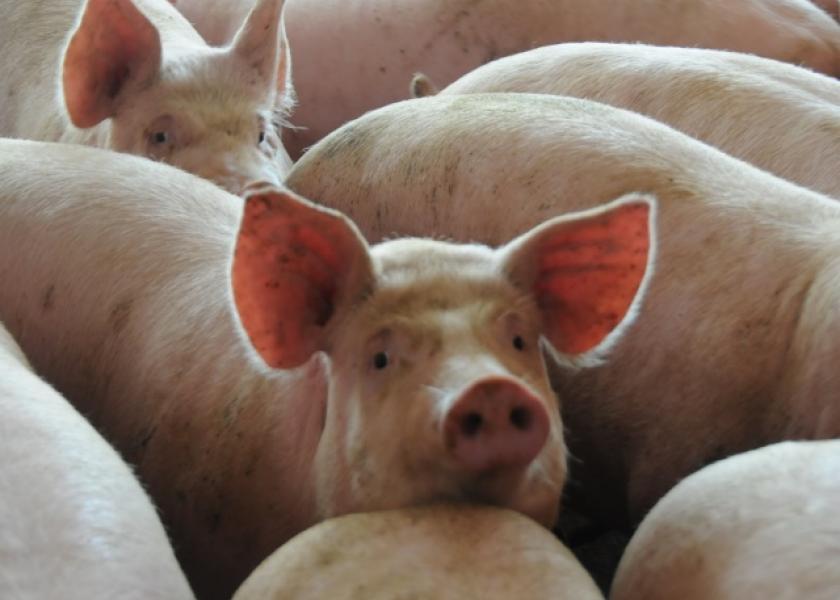Controlled Exposure to M. hyo Shows Promise for Eliminating the Pathogen

Controlled exposure to Mycoplasma hyopneumoniae (M. hyo) has gained momentum in recent years. Pig producers and veterinarians now have a better understanding of the shedding dynamics from unstable animals within the farrowing house and its impact on the downstream herd, said Amy Maschhoff, DVM, with The Maschhoffs, LLC.
“M. hyo exposure options are influenced by the desired end status of the breeding herd,” Maschhoff told Pig Health Today. “When there’s an increasing number of replacement breeding animals being produced free of M. hyo, there’s a greater need to incorporate M. hyo-exposure mechanisms in positive herds that either should remain or become stable and in M. hyo-positive herds that aim to become negative or naïve.”
When used in conjunction with an M. hyo-closure program, exposing all or some part of the herd to M. hyo is often considered an early crucial first step in the herd-closure process. Controlled exposure is useful for establishing day 0 in M. hyo-elimination programs.
“Regardless of the breeding herd’s final M. hyo status, the goal of controlled M. hyo exposure for replacement gilts and/or mature breeding animals is to create improved performance in terminal market animals,” Maschhoff said.
Exposure Methods
Several controlled exposure methods have been used to eliminated M. hyo, Maschhoff said.
Seeder Gilts
When utilizing seeder animals, the duration of shedding should be considered. Research has demonstrated that animals can shed M. hyo for more than 200 days, she explained.
Having an optimal number of seeder animals is also important, “however, the need for a high ratio of seeder animals to replacement animals presents a challenge to the flow of animals in isolation and in gilt-development facilities,” Maschhoff said. “This can cause a suboptimal impact to production practices and increase the cost of developing replacement breeding stock.”
Intratracheal Inoculation
This method involves administering a lung-homogenate inoculum through an intratracheal catheter to individual animals. It is challenging, labor intensive and requires animal restraint by multiple personnel to properly execute the inoculation procedure, Maschhoff said.
Aerosol Exposure
“A less invasive and less labor-intensive method for M. hyo exposure to large populations of animals is aerosol exposure,” Maschhoff said. “A lung homogenate inoculum is mixed with a media to be aerosolized by means of a mechanical fogger.”
Farm personnel can carry or evenly distribute the mechanical foggers throughout the facility housing the animals to be exposed, Maschhoff noted.
“In some situations, ventilation modifications have been used to enhance the respiratory rate of the exposed animals with the intent of increasing inhalation of the aerosolized M. hyo homogenate,” she said.
Several variables may sway the outcome: barn design, ventilation adjustments, number of foggers required, homogenate dose per gilt and dilution ratio for media and homogenate for successful execution of aerosol exposure.
“More research in this area is warranted,” Maschhoff said.
Donor Animals
“Donor animals must be selected for creating the lung-homogenate material used in intratracheal and aerosol inoculation techniques,” Maschhoff said. “Careful consideration should be taken when selecting the donor animals for creating a herd-specific lung homogenate.”
Following donor-animal selection, lung tissue from humanely euthanized animals can be evaluated for lesions indicative of M. hyo infection. In addition, a portion of the lung should be submitted for PCR testing to confirm the presence of M. hyo prior to creating the homogenate, Maschhoff pointed out.
“To create the homogenate, whole lung tissues are blended with a liquid medium to a slurry consistency using a standard household or industrial model kitchen blender. In some studies, homogenate straining mechanisms are used to control consistency after use of the blender,” she said.
The recommended ratio of tissue to medium varies from study to study, and producers should work with their veterinarian.
More Research Necessary
Controlled exposure methods for M. hyo have continued to evolve with the increasing number of swine herds that have undergone M. hyo elimination, Maschhoff explained, but knowledge gaps still exist.
“The techniques used to create homogenate, the survivability of M. hyo bacteria within the homogenate over time and the clinical significance, if any, of variation between M. hyo strains, are still unknown,” Maschhoff said. “Also, the impact of secondary pathogens that may be contained in a homogenate from donor animals on the health of the receiving herds is not well-documented.
“These factors emphasize the need for continued research on control, exposure and elimination programs associated with M. hyo,” she said. The full report on this topic can be found here.
More from Farm Journal's PORK:
Eliminating M. hyo in Your Swine Herd: Is Fogging an Option?







